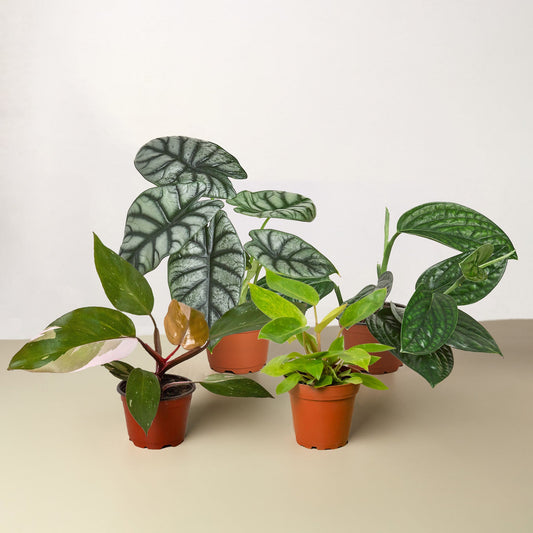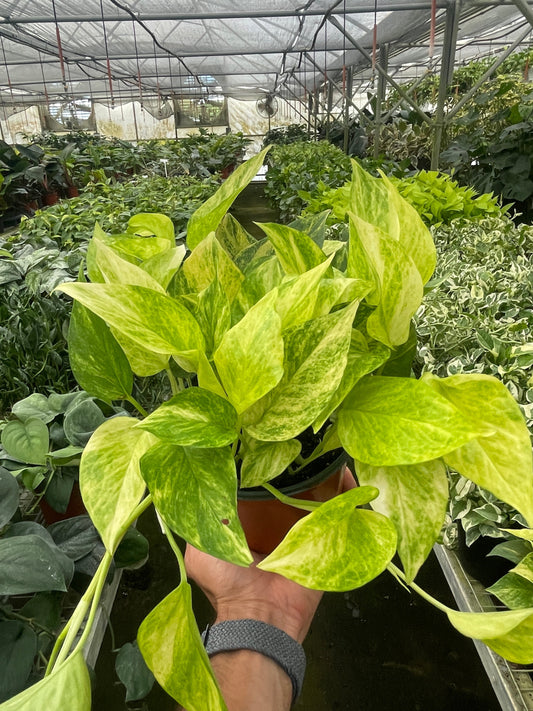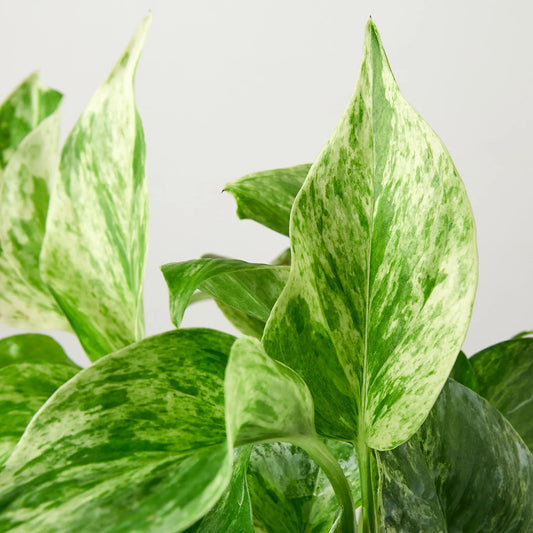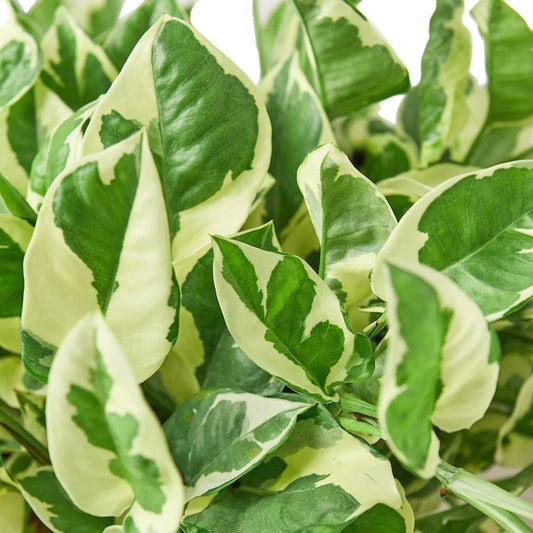How To Make Your Own DIY Ficus Tineke Fertilizer At Home
Cafe Planta Team
If you’ve been bitten by the plant bug, you’ve probably got a Ficus Tineke sitting proudly in your home. These beauties, with their striking variegated leaves, are the perfect companions for any plant lover. But to keep them thriving, they need a little extra care, and that’s where homemade fertilizer steps in.
In this article, we’ll take a friendly stroll through the steps to make your own DIY Ficus Tineke fertilizer. From understanding what your plant needs to gathering materials and mixing up your concoction, we’ll cover it all. Let’s get started on this green-thumb adventure, shall we?
Understanding Your Ficus Tineke’s Nutritional Needs
Before we jump into concocting our homemade fertilizer, it’s wise to have a quick chat about what your Ficus Tineke actually needs. Think of this as getting to know your plant’s palate. Ficus Tineke, like many houseplants, thrives on a balanced diet of nitrogen, phosphorus, and potassium, often labeled as N-P-K on commercial fertilizers.
So why do these nutrients matter? Well, nitrogen promotes lush leaf growth, phosphorus is crucial for root development, and potassium helps in overall plant health and disease resistance. It's like a well-balanced meal for your plant. Getting the right mix of these nutrients is essential for keeping those leaves looking vibrant and healthy.
Interestingly enough, Ficus Tineke isn’t too demanding when it comes to feeding. They don’t need a year-round fertilizer feast. Usually, feeding them every few months during the growing season (spring and summer) is enough. But homemade options can offer a gentle, consistent supply of nutrients without overwhelming the plant.
Gathering Ingredients for Your Homemade Fertilizer
Time to play chef, but for plants! Making your own fertilizer at home is easier than you might think, and you probably have some of the ingredients already in your kitchen. Here’s what you’ll need:
- Banana Peels: Packed with potassium, these peels are a plant’s best friend.
- Coffee Grounds: Rich in nitrogen, they can give your Ficus a healthy boost.
- Eggshells: High in calcium, which helps strengthen cell walls and root structures.
- Water: To mix everything together into a usable liquid form.
These ingredients not only provide essential nutrients but are also eco-friendly and help reduce kitchen waste. Plus, there’s something deeply satisfying about using what might otherwise be thrown away to nurture your green babies.
Preparing Your Ingredients: The Art of Composting
Now that you have your ingredients, it’s time to prep them. This is where the magic of composting comes in. Composting essentially breaks down these materials into a form that your Ficus Tineke can easily absorb. Here’s how you can do it:
Banana Peels: Let them dry out completely, then grind them into a fine powder using a blender or a coffee grinder. The powder form makes it easier for the plant to absorb the nutrients.
Coffee Grounds: Simply let them dry out. You can spread them on a baking sheet and leave them in a warm place. Drying helps prevent mold growth once you mix it into your fertilizer.
Eggshells: Wash them thoroughly to remove any residue. Once dry, crush them into a fine powder. Like all the other ingredients, a fine texture ensures better absorption by the plant roots.
Once you’ve prepared your ingredients, store them in separate airtight containers until you’re ready to mix up your fertilizer brew. This keeps them fresh and ready to nourish your Ficus Tineke when needed.
Mixing Your DIY Fertilizer
Alright, now comes the fun part—mixing your DIY fertilizer. This is where you get to channel your inner plant alchemist. Follow these steps to create a balanced mix:
- Measure Your Ingredients: For a simple mix, use one part banana peel powder, one part coffee grounds, and one part eggshell powder. Depending on how much you want to make, you can adjust the quantities.
- Combine and Blend: Mix the dry ingredients thoroughly in a bowl. If you have a larger batch, you can use a blender to ensure everything blends evenly.
- Add Water: Slowly add water to the dry mix, stirring until you get a slurry-like consistency. The goal is to make it easy to apply to the soil without being too watery.
- Let It Sit: Allow your mix to sit for a day or two. This helps the ingredients meld together, enhancing their effectiveness.
Remember, the idea is to create a fertilizer that’s easy for your plant to absorb. So, if you find the mix too thick, add a bit more water. On the other hand, if it’s too runny, add a little more of your dry mix.
Applying Your Homemade Fertilizer
With your homemade fertilizer ready to go, it’s time to give your Ficus Tineke a nutrient boost. Here’s how to apply it:
- Choose the Right Time: The best time to fertilize is during the growing season when your plant is actively putting out new leaves.
- Water First: Water your plant a day before fertilizing. This prepares the soil and helps prevent root burn from the nutrients.
- Apply Evenly: Pour the fertilizer mix around the base of the plant. Ensure even distribution, avoiding the leaves to prevent any potential burning.
- Monitor and Adjust: Watch how your Ficus responds. If you notice yellowing or leaf drop, you might need to adjust the frequency or concentration of the fertilizer.
As with any fertilizer, more isn’t always better. So, start with a modest amount and see how your plant responds before increasing the dosage.
Troubleshooting Common Issues
Even with the best intentions, sometimes things don’t go as planned. If your Ficus Tineke starts acting up after fertilizing, here’s what you can do:
Yellowing Leaves: This could be a sign of over-fertilization. Give your plant a break from feeding and water it thoroughly to help flush out excess nutrients.
Leaf Drop: If leaves start falling off, it might be stress from too much fertilizer. Similar to yellowing leaves, hold off on feeding and ensure your plant isn’t getting too much direct sunlight.
No Growth: If your plant doesn’t seem to be growing, it might need more nutrients or a different balance. Consider adjusting your fertilizer mix or frequency.
Remember, every plant is unique, and what works for one might not work for another. It’s all about observing and adjusting as needed to find the sweet spot for your Ficus Tineke.
Benefits of Homemade Fertilizer
Why go through the trouble of making your own fertilizer when there are plenty of options at the store? Well, there are several benefits to the DIY approach:
- Cost-Effective: Using kitchen scraps like banana peels and eggshells means you’re spending less on commercial fertilizers.
- Eco-Friendly: Homemade fertilizers help reduce waste and are better for the environment.
- Gentle on Plants: Natural fertilizers release nutrients slowly, reducing the risk of nutrient burn.
- Customizable: You can adjust the mix to suit your plant’s specific needs, which is a great way to learn more about your plant’s preferences.
Plus, there’s a certain satisfaction in knowing you’re nurturing your plant with something you made yourself. It’s like giving your green friend a homemade meal.
Alternative Natural Fertilizer Options
If you’re looking to mix things up a bit, there are other natural fertilizer options you can explore. Here are a couple of alternatives:
Compost Tea: This is a liquid version of compost that’s packed with nutrients. You can make it by steeping compost in water for a few days, then straining it. Use the liquid to water your plants for a nutrient boost.
Worm Castings: Often referred to as “black gold” by plant lovers, worm castings are rich in nutrients and beneficial microbes. You can mix them into your soil or make a tea similar to compost tea.
These alternatives can be used in conjunction with your homemade fertilizer or as a standalone option. They’re a great way to diversify your plant’s diet and keep it healthy.
Storing Your Fertilizer
If you’ve made a large batch of fertilizer, you’ll need to store it properly to keep it effective. Here’s how:
- Airtight Container: Store your dry ingredients in airtight containers to prevent moisture and pests.
- Cool, Dry Place: Keep your containers in a cool, dry place to maintain the potency of the nutrients.
- Label and Date: Label your containers with the contents and the date you made them. This helps you keep track of freshness.
Proper storage ensures that your fertilizer is ready to go whenever your Ficus Tineke needs a little boost.
Final Thoughts
Creating your own DIY fertilizer for your Ficus Tineke is a rewarding experience. It’s a simple, cost-effective way to ensure your plant gets the nutrients it needs to thrive. By understanding your plant’s needs and preparing a balanced mix, you’re well on your way to becoming a plant whisperer.
At Cafe Planta, we’re passionate about plants and the joy they bring to our lives. Whether you’re a seasoned plant parent or just starting out, we’re here to help. If you have any questions, feel free to email us or send us a message on Instagram. Let’s grow together!



















